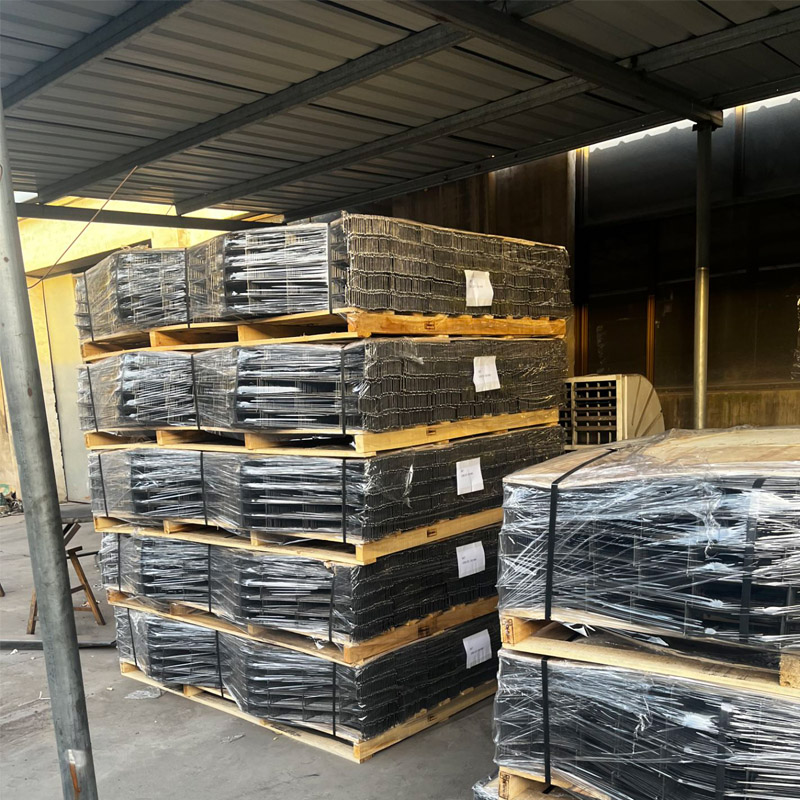
- Mobile Phone
- +8613931874955
- sales@cntcmetal.com
Understanding the Role and Function of Brick Ties in Construction
What Do Brick Ties Do?
Brick ties are essential components in masonry construction, particularly in the construction of brick walls. Often overlooked by the general public, these simple metal ties play a crucial role in ensuring the structural integrity and longevity of brick structures. In this article, we will explore the function, types, benefits, and installation practices of brick ties, shedding light on their significance in both residential and commercial buildings.
Function of Brick Ties
The primary function of brick ties is to connect the brick veneer to the structural framework behind it, typically made of wood or metal. This connection is vital for several reasons. First and foremost, brick ties provide stability and support to the outer layer of the wall, preventing it from collapsing or separating from the inner framing due to lateral forces such as wind pressure or seismic activity. They also help in distributing the weight of the brick veneer evenly across the structural frame, which is critical in maintaining the overall balance and load-bearing capacity of the wall.
Additionally, brick ties assist in accommodating the thermal expansion and contraction of both the brick and the structural materials behind it. As temperatures fluctuate, materials expand and contract at different rates. Brick ties act as flexible connectors that can absorb these movements without compromising the integrity of the wall system.
Types of Brick Ties
There are several types of brick ties used in construction, each designed for specific applications and requirements
1. Wire Ties These are perhaps the most commonly used type of brick ties. Typically made from galvanized steel, wire ties are inexpensive and relatively simple to install. They come in various sizes and shapes, allowing for flexibility based on the project’s needs.
2. Angle Ties Angle ties offer a more robust connection and are often used in situations where additional strength is required. These ties are usually L-shaped and provide greater lateral support.
3. Brick Veneer Ties Specifically designed for brick veneer applications, these ties often include additional features to cater to moisture control and ventilation, helping to keep the wall dry and prevent moisture-related issues.
what do brick ties do

Benefits of Using Brick Ties
The use of brick ties brings numerous benefits to masonry construction. First, they enhance the structural integrity of brick walls, providing essential support that can prevent costly repairs and structural failures in the future. By ensuring proper attachment between the brick veneer and the backing wall, brick ties contribute to the overall lifespan of the building.
Moreover, brick ties can improve energy efficiency. By creating a more stable wall system, they help mitigate issues related to drafts and thermal bridging, which can lead to increased energy consumption for heating and cooling.
The incorporation of brick ties also contributes to safety. A well-anchored brick veneer is less likely to experience issues during high winds or seismic events, reducing the risk of injury to occupants or passersby.
Installation Practices
Proper installation of brick ties is crucial for their effectiveness. Brick ties should be installed at regular intervals, typically 16 to 24 inches apart, depending on the building's specifications and local building codes. They must be anchored securely to the structural framing and should be placed in such a way as to accommodate the expansion and contraction of building materials.
It is also essential to ensure that the ties are not over-tightened during installation, as this can lead to damage or undue stress on the materials involved. Regular inspections should be conducted to check for any signs of corrosion or mechanical failure, especially in areas subject to harsh weather conditions.
Conclusion
In conclusion, brick ties are small components that make a big difference in masonry construction. By providing essential support and stability to brick veneers, they enhance the durability, safety, and efficiency of structures. Understanding the role of brick ties can help builders, architects, and homeowners appreciate the importance of these components in creating resilient and long-lasting buildings. As we continue to build upward and outward in our urban environments, the significance of brick ties will undoubtedly remain a cornerstone in the evolution of masonry design and engineering.
share:
-
Why Sacrificial Formwork Is Redefining Underground ConstructionNewsJun.06,2025
-
The Structural Dynamics of Modern Concrete: How Snake Spacers Revolutionize Flexible ReinforcementNewsJun.06,2025
-
Snake Spacers Smart-Lock Concrete Reinforcement with Surgical PrecisionNewsJun.06,2025
-
Snake Spacers: Reinforcement Precision for Modern Concrete ProjectsNewsJun.06,2025
-
Snake Spacers Powering Concrete's Structural DNANewsJun.06,2025
-
Slither into Success: Snake Spacers' Precision Bite for Unbreakable ReinforcementNewsJun.06,2025
-
Sacrificial Formwork: Building Stronger, Faster, and Safer StructuresNewsJun.06,2025



















